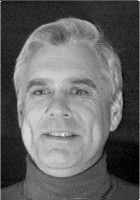

Colin Brench
TC-9 Committee
Welcome to the first TC-9 column! It is our goal to make this an ongoing contribution to the EMC Newsletter. The IEEE EMC Technical Committee 9 – Computational Electromagnetics, is concerned with broad aspects of applied computational electromagnetic techniques, which can be used to model electromagnetic interactions in circuits, devices and systems. The primary focus is with the identification of modeling methods that can be applied to interference (EMC) phenomena, their validation, and delineating the practical limits of their applicability. Included are low and high frequency- domain techniques, as well as time-domain methods.
Each year TC-9 organizes modeling workshops and special sessions at the IEEE International Symposia on EMC to provide basic training on, and insight to, the world of computational electromagnetics. TC-9 also provides technical expertise in reviewing relevant papers submitted to the EMC Symposia.
TC-9 is composed of members with a wide range of backgrounds. Within the committee are those who have developed EMC modeling approaches, engineers whose designs hang on their abilities to effectively understand and use these tools to solve problems, and those working in universities who have been developing numerical techniques and training others. Additionally, the membership includes participants from many countries around the world. This committee benefits greatly from the synergy that results from bringing together experts from diverse areas, interests, and places.
At the 1999 EMC Symposium, the TC-9 members met to review the past year’s results and to plan for the 2000 Symposium in Washington DC. As in previous years, two workshops were sponsored by TC-9 this year. The first was an introduction to the basics of computational electromagnetics (CEM), and was held on the Monday afternoon of the symposium week. The main focus was on the common numerical techniques used for solving electromagnetics problems computationally. The presented techniques were the Finite-Difference Time-Domain method, the Finite Element Method, the Boundary Element Method, more commonly known as the Method of Moments, and the Partial Element Equivalent Circuit method. Additionally this year, there was also a presentation on quasi- static modeling, which is a very efficient means of approaching the solution of electrically small geometries.
The second workshop was held at the end of the week on Friday morning, and provided a series of application examples. These were selected to provide as much insight as possible to the strengths and weaknesses of the various numerical methods and approaches to modeling. The presenters were gratified to see a large attendance on Monday and even more so to see that there was an enthusiastic attendance on Friday.
Given the growing interest in EMC modeling, TC-9 plans to continue to organize these two workshops at future symposiums. The content of these workshops, while changing somewhat from year to year, will always be focused on providing a solid background to the most common modeling techniques currently in use. The application workshop will offer presentations showing how modeling has helped engineers with practical problems on relatively recent product designs.
For those who are more at the forefront of developing and using numerical techniques for EMC work, TC-9 organized two special technical sessions on modeling topics at the 1999 EMC Symposium to ensure the latest information is available to the community. One such session was the solution to “challenge problems”, organized by Bruce Archambeault and Al Ruehli, where experts in a given technique were invited to solve a particular, EMI-relevant problem, not only to show how well they can do it, but also to show the limits of a given technique. In addition, Antonio Orlandi and Salvatore Celozzi organized a session on validation of modeling methods. A number of invited papers were presented at this special session.
In addition to the work being done for the symposia, there are a number of on-going projects within TC-9 that are intended to help EMC engineers utilize CEM effectively in their job functions. A web site has been created with a growing set of EMI modeling problems (www.emcs.org/tc9). The main goals of this web site are:
One objective of this site is to provide a set of problems from which an EMC engineer may choose an example to test CAD tools on the types of problems the engineer wishes to solve. In this way, a tool demonstration can provide the engineer with results related to his or her application, rather than displaying a demonstration of a problem designed to highlight the tool’s strengths. It will also serve as a set of problems from which an engineer can use examples to develop their knowledge of, and facility with, a particular tool that they use. With this evolving problem set, engineers will have a powerful aid to help them determine if their own modeling work is providing suitable answers. Further, for certain well-defined problems, it is possible to make careful measurements for developing confidence in the modeling. While measurements come with their own sources of potential error, with a sufficiently well defined problem it is possible to correlate both approaches. Discrepancies that are identified and resolved will help bring the practical design oriented EMC engineer in closer accord with the modeler.
The focus of future columns will be to keep the EMC community apprised of the activities of TC-9, both the personalities involved and the work being done. In keeping with TC-9’s goal of furthering the understanding of CEM within the EMC community, a variety of topics are planned for future columns. Future topics include integrating modeling into EMC design practice, overviews of different numerical techniques and applications to EMC, and getting the most out of modeling results.
Colin Brench, TC-9 Committee, colin.brench@compaq.com
Jim Drewniak, TC-9 Chairman, drewniak@ece.umr.edu
Bruce Archambeault, EMC/EMI modeling web page, barch@us.ibm.com